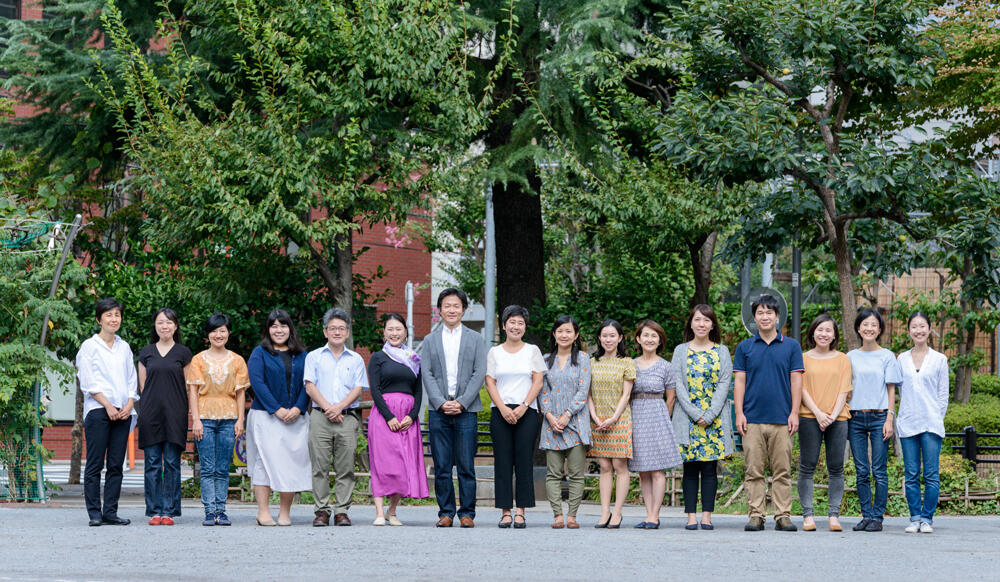
The Japan Association for Refugees (JAR) started 20 years ago, with one person renting a desk at an office of another organization. The association now supports 600 refugees a year, with an expanded staff of 30 members, including part timers, who are all engaged in projects to achieve the mission of “supporting refugees who have fled to Japan and creating an open society where we can live together.”
The growth of JAR demonstrates how opportunities in civil society have increased to assist refugees; however, it also portrays the reality of the need for a wider range of support in Japan. These 20 years were a time of struggle for us–Japan is extremely strict regarding refugee status recognition compared with the international standards, and this had made it difficult for people to be recognized as refugees. Some “fell out of” the safety net during the application process. Amid such severe circumstances, we thought, “What would happen to them if we give everything up here,” and kept supporting those who called for help. As we look back on JAR’s history, we would like to introduce the changing environment around refugees in Japan as well as our future challenges in this article.
Historical Background of JAR
Contrary to the current strict system for the recognition of refugees, there was a time when Japan was quite open to refugees. In the late 1970s, around the end of the Vietnam War, a number of people fled from Indochina countries (Vietnam, Laos and Cambodia) to become refugees. Boats with numerous people drifted down to Japan’s coast one after another. Due to various reasons, including the pressure from international society, the Japanese government decided to accept these refugees from Indochina. The acceptance of refugees totaled over 10,000 until 2005, the population including family members brought over from their countries. Many settled in Japan and live across the country.
Although the Japanese government initiative promoted the acceptance of Indochinese refugees, the government later became extremely passive about accepting refugees. Despite Japan joining the Refugee Convention on the occasion of accepting Indochinese refugees and established a system to grant refugee status, the actual number of refugees who were granted asylum remained tremendously low at 1 in 1995, 2 in 1996, and 1 in 1997.
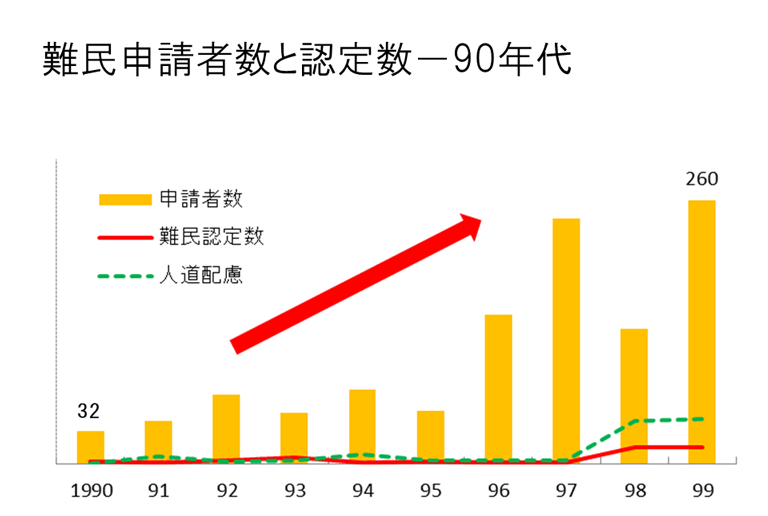
In 1998, however, the number of refugee applicants rose to 300 and the refugee issue was brought up in the Diet. This led to the recognition of 16 refugees, resulting in increased public interest in the domestic problem of refugees. JAR was established in 1999, in the midst of this trend.
As Fellow Human Beings, We Cannot Bear Watching Refugees to Suffer
The refugees who escaped from persecution in their mother country and finally arrived in Japan still faced many difficulties, as they stood little chance of being recognized as a refugee, had no work permit, lived far away from their family, and was exposed to the uncertainty and fear of being deported. We could not bear to let this happen, and because of human compassion, wanted to help. Due to this compassion, JAR was launched as an organization to support refugees.
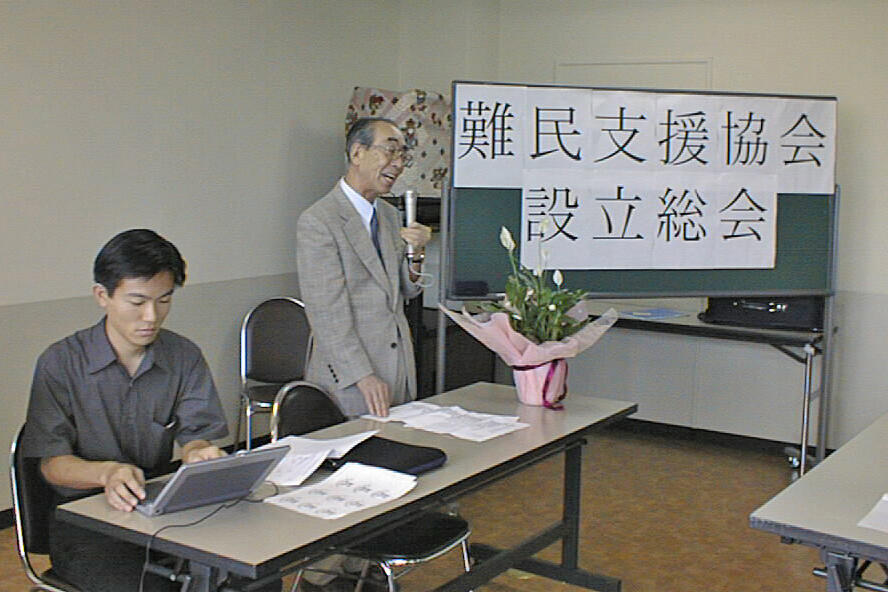
Since establishment, we have assisted refugees from two aspects to offer direct help–legal assistance to refugee applications and support for illness and other issues in daily life. In order to improve the system itself, we also strive to make policy recommendations and to raise awareness along with individual counseling.
Rising Interest after the 9.11 Attacks and the Shenyang Incident
Soon after our establishment, we were put to the test. In 2001, because of the 9.11 attacks, refugee applicants from Afghanistan were detained for no logical reason, and we worked hard with lawyers for their release.
A year later, footage of a North Korean family arrested after seeking refuge at the Japanese Consulate General in Shenyang, China, also drew attention to refugee protection across society.
Taking this opportunity, we made policy recommendations while continuing to offer consultations with our limited resources. This led to partial revision of the system for recognition of refugee status. However, many refugees were still in no-win situation. One of the symbolic incidents of that time was the sit-down strike by a Kurdish family in 2004.
A Mid-Summer Sit-down Strike and Deportation
This family was recognized as refugees by the United Nations High Commissioner for Refugees (UNHCR). However, the Japanese government did not accept them, and the case was under trial. The family started a sit-down strike in front of the United Nations University, where the UNHCR office in Japan was located at the time, due to the fact that there had not been any Kurdish people of Turkish nationality being recognized as a refugee, and against the method of investigation (*1) by the Immigration Bureau (current Immigration Services Agency of Japan). Their purpose was to get the UNHCR to be more proactive in getting refugee status in Japan.
Mass media widely reported this mid-summer sit-down strike of the family with small children, which brought support from many citizens such as students, housewives, and office workers.
A petition of 60,000 signatures to stop the family’s detainment and deportation was sent to the Ministry of Justice. Despite such efforts, the situation ended in the worst scenario, where the father and eldest son were suddenly detained and deported within 24 hours. In response to this deportation, the UNHCR issued an exceptional statement of concern, which the media also reported internationally.
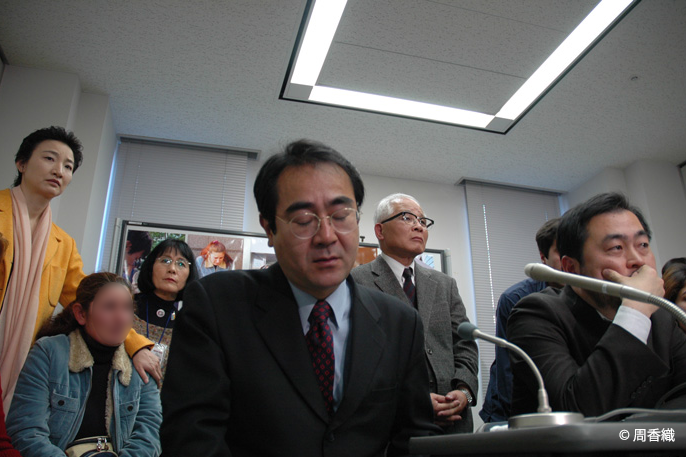
In those days, our clients seeking counseling were not only from Kurdish and People from Myanmar, but also from African countries, and JAR received about 200 counseling cases on an annual basis. In 2006, we created a toll-free hotline in order to provide more people with counseling over the phone.
Despite no solid backing, sustainable funding was essential to continue providing the needed support for hundreds of people. Instead of relying on short-term grants and subsidies, in 2007, we started a monthly program for fixed donation called the “Refugee Special Supporter” program for more stable funding.
Lifeline Severed for Over 100 People
Amid our efforts in expanding the scope of support activity, the Lehman Shock in 2008 terminated the public financial. The financial assistance was a support fund for refugee applicants in poverty budgeted by the Ministry of Foreign Affairs. The amount given to individuals was limited to about two thirds (*2) of the standard livelihood protection, but nonetheless was a lifeline for refugee applicants who could not work.
However, as unemployment increased because of the Lehman Shock and the number of people needing the protection fee rose, the Ministry of Foreign Affairs suddenly stopped the support in December 2008 due to budget constraints. Although this was recovered after about a month, a prioritization system was implemented from the following fiscal year. As a result, the protection subsidy for over 100 people, equivalent to about half of those needing this assistance, was discontinued.
In response to endless consultation cases such as “not having eaten for a few days” or “being in arrears with the rent and being asked to leave,” we launched an “Emergency Campaign,” in union with several other organizations and requested for donation. Thanks to heartfelt donations including food and supplies, which exceeded our initial expectation, we were able to prevent people from having to live on the streets and got by this state of emergency. In parallel, we requested the government to increase the budget for the protection subsidy.

Looking back on the five-month Emergency Campaign, our staff members say “we almost worked to death.” Although we did our best to reveal our fundamental power to take 10 times or more consultations than usual, engaging in additional work for launching and running the new Emergency Campaign and negotiating with the government, we literally felt the limits of being a private organization to maintain safety nets. While an increasing number of refugee applicants faced financial difficulties, we keenly felt the need for refugees’ mutual support as well as assistance from local communities. This triggered the launch of the “Community Support” program to support communities with refugee residents.
The Great East Japan Earthquake and Suggestions from the Refugees
In March 2011, the Great East Japan Earthquake happened. It was fortunate that there were no refugees visiting for counselling at the time of the earthquake. However, our office shook hard and shelves knocked down, causing chaos in the workplace. On top came the disruption of public transportations, forcing us to suspend our operation.
Many aftershocks followed and our staff members were full of anxiety with all the confusing information, but we opened our office the following week as we were worried about the refugees. As imagined, the refugees were anxious because they had no access to information, such as updates on the nuclear accident, since they did not understand Japanese. We paid emergency visits to refugee communities in the Kanto suburban areas to provide supplies and multilingual information.
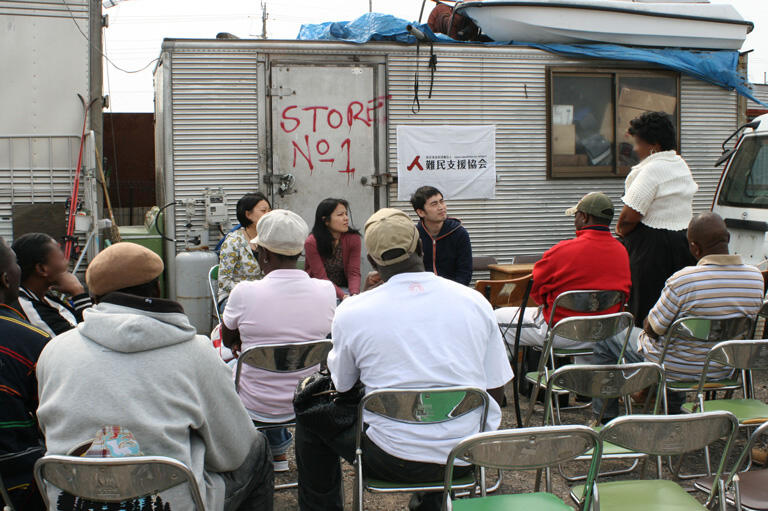
Meanwhile, we received a number of unexpected comments from refugees: “Will JAR be going to Tohoku to support? If so, I want to come along,” “We are also a part of the Japanese society. We should do something to help the victims of the disaster,” “Japan has helped me until today, and I want to return the favor. Japan is my second home,” and so on.
Spurred by their passion, JAR decided to provide support in the Tohoku region and launched the refugee volunteer dispatch program. By November 2011, more than 200 refugees visited Rikuzentakata City in Iwate prefecture through our volunteer dispatch program to remove debris and assist in the soup kitchen.
In addition to the volunteer dispatching, utilizing our knowledge and experience through refugee support, we also provided support for women and legal assistance in Rikuzentakata City, from a standpoint on “how to provide support to those who have difficulty receiving support.”
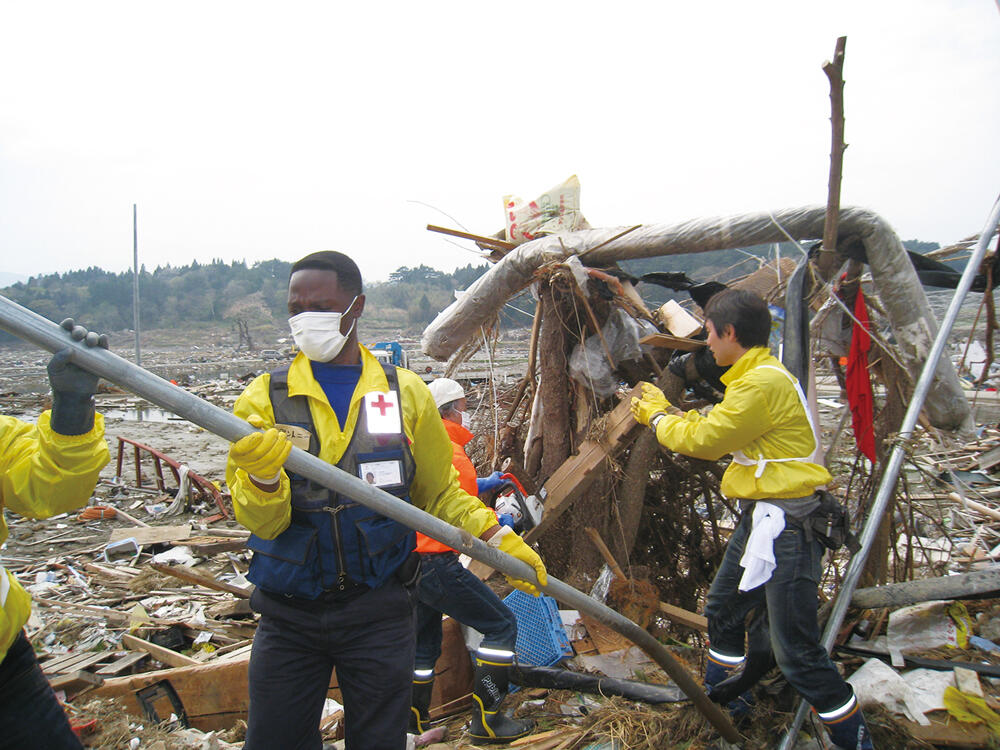
Increasing Demand for Support and Our Limitation
In those days, more than half of the refugees visiting JAR were from African countries. However, due to the Syrian civil war erupting around the same time of the Great East Japan Earthquake, many Syrian refugees started visiting us. In 2012, the number of refugees seeking help grew to 670, a 130-person increase from the previous year. Many of them were in poverty, and it became impossible for us to fill in the gaps of the safety net. Up until then, our slogan had been to “protect refugees from living on the streets.” However, a growing number of refugees made it difficult to provide shelter to everyone in need, and we were forced to change the slogan to “not let refugees freeze to death.”
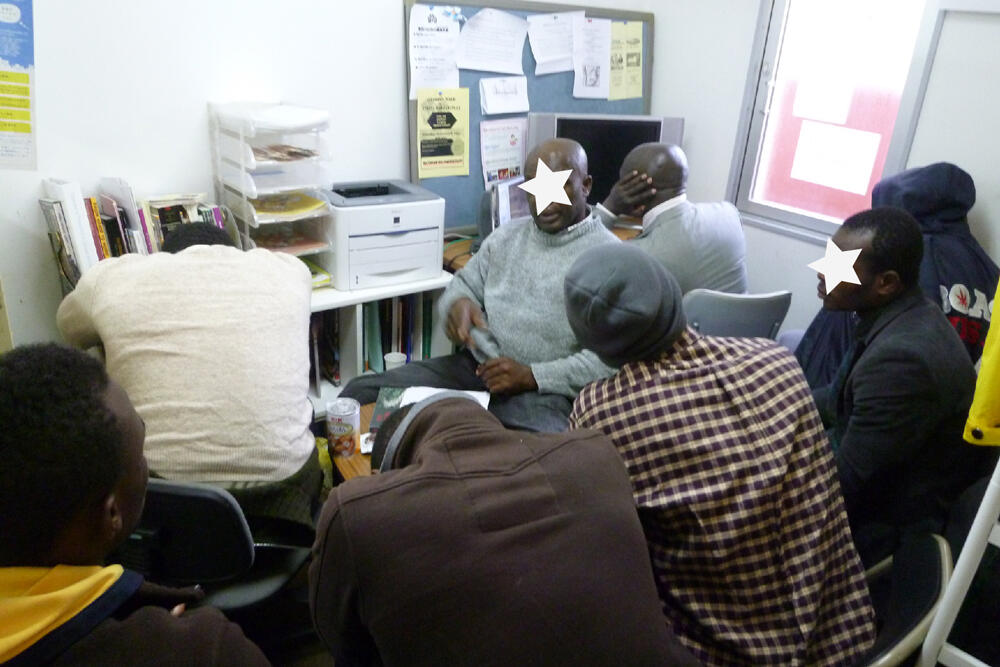
The reason behind our limit to keep filling in the gaps of the safety net was not just because of the increasing number of refugees, but also because they could not foresee a clear future due to the strict refugee recognition system in Japan. While only 0.3% of the refugees had been accepted in a year, most lost residency status and their rights necessary to live. They were not allowed to work, not applicable to the public financial assisntance, and had no national health insurance. The circumstance in their countries did not allow them to return and they only had the choice to live in Japan. The fact that the system was not able to provide solutions for these people only led more people to seek support to JAR, outnumbering our capacity of support.
Full-Scale Employment Support Program to Kick Off
Given these situations, JAR started to provide a full-scale employment support. The purpose was not only to respond to refugees’ willingness to work but also to allow us to swiftly secure employment for refugees who were permitted to work. By doing so, we aimed to offer sustainable support to more vulnerable refugees with disadvantages.
Back then, work permits were granted after 6 months from submitting the refugee application (*3). However, it was not easy for them to find a job without having any network nor Japanese proficiency. Especially people without a community of people from their homelands, such as people from African countries, had difficulties getting job referrals from their own people, even though they had a work permit.
Therefore, JAR obtained an Employee Placement Businesses license and started matching refugees to companies for employment from 2012. However, refugees who were once employed were let off due to misunderstandings between the employer and the refugee, mostly due to having minimum Japanese proficiency and knowledge of Japan-specific business manners. To solve this issue, we started to develop a program in 2014 to teach practical Japanese and business manners. In 2016, we formed a partnership with a Japanese language school. After many trial and errors, we now have an “Employment Preparation Japanese Program” which provides trainings for three hours a day for a total of 60 days (180 hours). We now match refugees to various industries including manufacturing, restaurant businesses, cleaning services and healthcare services, and the job retention rate has grown much higher.
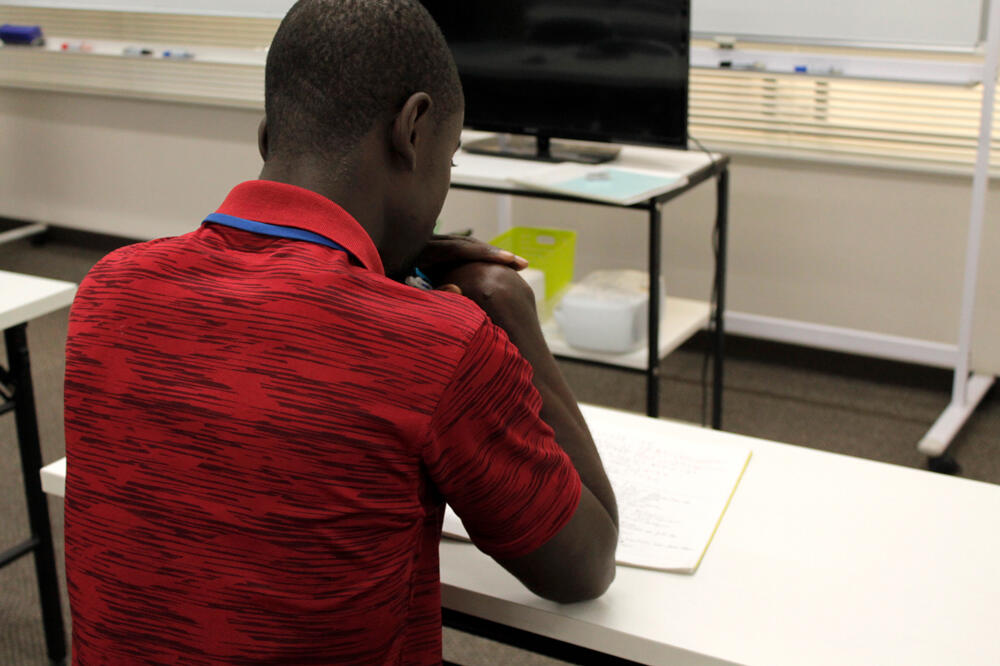
Media Reports on the “Abuse” of Refugee Application and a Stricter System
When our employment support got on track in 2015, the media widely broadcasted that the application of refugee status was “falsified,” “misused” and “abused” by applicants to get a job in Japan.
This does not portray the overall picture. The people JAR supported had fled to Japan after being persecuted, and were willing to work to survive, all while awaiting the outcome of their application. Fueled by the media, people were becoming more and more against applicants and against granting refugees a work permit.
In the announcement of the Ministry of Justice and the media reports, the term “abuse” of the system was increasingly mentioned, and what we feared became true. In January 2018, the Ministry of Justice announced to “further review of the refugee recognition system operation” and to add more restrictions on granting applicants residence and work permits. More applicants’ work permit was rejected and even if they were granted, it took eight months, two months longer than the previous system, to be granted. For this, we had no choice but to review our support plan.
Furthermore, there was also another issue spanning more than 20 years. Since immigration control and recognition of refugees are under the same organization (Immigration Services Agency of Japan), their main focus being the control of refugees and not to protect them, even eligible people have been rejected.
The previously mentioned review on the refugee recognition system is against its nature, which originally should be the provision of adequate protection. Instead, however, it only focuses on the restriction of abused and misused applications. The fundamental structure of the system has never changed–even if the applicants were granted a work permit and found a job, most would eventually be rejected by the system and would lose their permit. Even if they become an indispensable workforce at their workplace, there is hardly any possibilities to change their residence status to a profession-based permit.
We are fighting against an obstacle which has become much clearer compared to 20 years ago, and we are struggling on how we can support each and every refugee under these circumstances and how we can change the system, while continuing to reach out and providing support to each one of them.
With Our Supporters
On the other hand, a major progress we feel upon our 20th anniversary is the fact that we’ve been blessed with so many supporters, to an extent that was unimaginable when JAR was founded. When the organization commenced its activities with the support of 40 people, the issue of refugees itself was hardly known. Today, there are around 2,200 individuals, organizations and companies sharing our awareness and supporting us through donations. Beyond donations, our activities have also been supported by countless people through the provision of shelters, legal assistance, volunteers and pro bono members. Information from JAR has been followed by over 20,000 people, and we have been able to share what’s happening on the ground and point out issues instantaneously to many people.
In 2018, we were able to move to a new office where refugees can feel safer, thanks to the support from over 300 people.
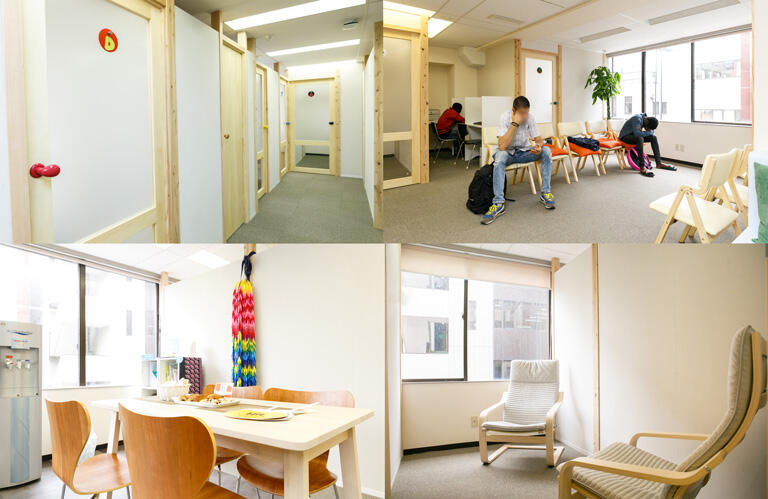
Unfortunately, the reality is far from our ideal of ” ensuring that all refugees who flee to Japan seeking help will be saved and settle down in the new land with hope, and to build society where we can live together with refugees.” But we believe that the outcome was still meaningful as we’ve been able to support over 6,000 refugees as much as we could for over 20 years.
While supporting each individual, we face unexpected happenings every day. For example, it was not once or twice we had to search for a hospital: some needed emergency hospitalization due to a serious illness during their refugee status application procedure. Other times we immediately needed to look for a maternity hospital for those in their final month of pregnancy. Some refugees faced mental health issues from the trauma they experienced back home, as well as the uncertainty they faced in Japan. In many cases we could only listen to them when they would blare out their anger over their reality of not being able to do anything about their own circumstances. There are many things that cannot be solved with just us alone, but with help from many other people, we have made our utmost endeavor to improve each person’s situation.
When someone’s family was finally able to join them after they had started to develop mental instability from worrying about their family left back home.
When we were able to see someone raising their child with love after getting over so many hurdles to give birth.
When someone’s Japanese had significantly improved when they came to visit the office after not having seen them for a while.
What we’ve witnessed is only a moment of their lives. But over the past 20 years we have come across over 6,000 people, and were able to be of some help to them. This is a result we’ve managed to achieve with all of your help.
The global situation surrounding refugees is not bright by any means, but we will keep up our challenge without losing hope, so that those who arrive in Japan are able to live with hope. All of the support we’ve received so far will help us. We believe every small step gives hope to individual refugees, and will change society’s future.
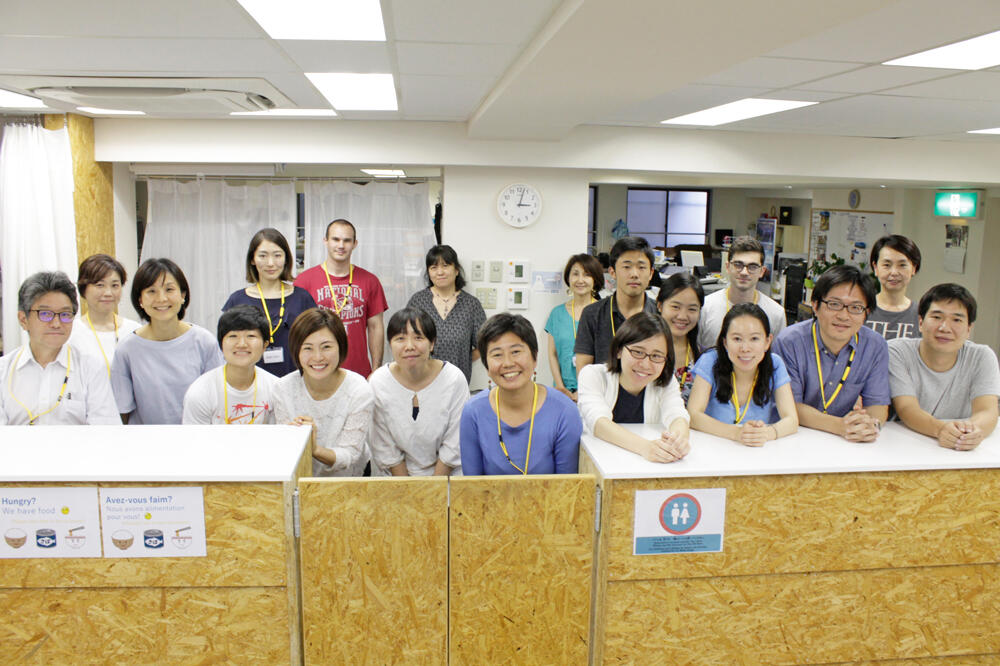
*1: The Immigration Bureau sent officials to Turkey, shared information about the refugee with the Turkish government and police, and conducted a background check on them in cooperation with military police officers, visiting their family and relatives’ homes. The sharing of information concerning refugee applications with refugees’ homeland governments is something that must not happen. UNHCR also considered that the applicants were exposed to increased danger because of this conduct. This investigation by the Bureau triggered the sit-down strike.
*2: Calculation of livelihood protection subsidy based on the assumption of a single person in their 30s, living within the Tokyo 23 wards, during seasons other than winter
*3: The case when the person had a residence permit during the refugee status application period





